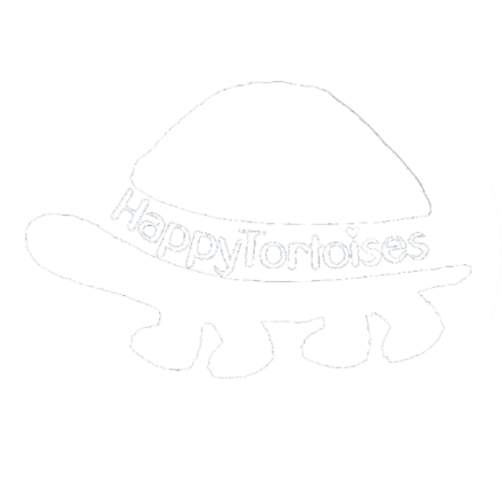Mediterranean Spur Thighed (“Greek”) Tortoise Care Sheet
Temperature
Day 24 - 28 º C
Basking area 30 -32º C
Night 22º C
These temperature ranges are recommended for hatchlings and juveniles in indoor enclosures. Older Greek tortoises can be housed outside from early spring to early autumn (see Hibernation section).
Substrate and humidity
Use a 50:50 mix of organic/unfertilised topsoil and play-pit sand.
Soil depth should be approximately the height of the shell (1–2" for hatchlings/juveniles; 4”+ for adults).
Lightly mist the substrate daily to prevent dust and to support humidity and thermoregulation.
Change substrate every 4–6 weeks.
Create a humid hide by placing a handful of damp sphagnum moss inside a shelter.
Food
100% of the diet should be tortoise-safe weeds and flowers, such as:
Weeds: dandelion, plantain, hawksbeard, mallow, sowthistle
Flowers: pansy, campanula, forget-me-not, African violet, hibiscus
When weeds are unavailable (e.g. frosty spells): Lamb’s lettuce, Florette “Crispy Salad” mix (green or pink label), Romaine.
Check out this video for more ideas on safe foods. All of the foods shown are also suitable for Greek tortoises except grasses and hays, which they do not eat.
Food supplements
Light sprinkle of calcium powder every other day (e.g. Mon/Wed/Fri)
Light sprinkle of Nutrobal on alternate days (e.g. Tue/Thu/Sat)
Leave one day supplement-free (e.g. Sun)
Leave cuttlefish in the enclosure for additional calcium
Water
Provide fresh water daily in a shallow dish the tortoise can easily step in and out of.
Bathing
Frequency:
0–1 year: every other day, 10 minutes
1–2 years: twice per week, 20 minutes
2+ years: once per week, 30 minutes
Give a shallow bath (¼ height of the tortoise) with lukewarm water (30–32 °C). Bath in the morning or early afternoon, so tortoise can dry off before nighttime.
Basking and UVB
UVB is essential for healthy shell and bone development.
Use a combined UVA + UVB bulb, or a separate UVB tube plus separate basking bulb.
Summer: 12 hours of light per day
Winter: 8 hours per day
Ensure the tortoise cannot reach the bulb (approx. 30 cm from top of shell—follow manufacturer guidelines).
Replace UVB bulbs every 6–12 months, as UV output degrades.
Weighing
Weigh weekly before bathing and feeding. Record weights to monitor steady growth.
Disinfectant/cleaning
Clean feeding and water trays daily.
Clean the enclosure weekly using hot water and a tortoise-safe disinfectant.
Housing/habitat
Hatchlings/Juveniles: house indoors in an open-topped tortoise table with correct heating and UVB (avoid vivariums due to overheating and poor ventilation). They should also have a safe, predator-proof outdoor enclosure whenever temperatures permit.
Sub-adults/Adults: thrive outdoors in a secure area with tortoise-safe weeds/flowers for natural grazing and access to real sunlight. They may need an indoor setup for over-wintering or after hibernation if weather is too cold (see Hibernation section).
Space requirement: minimum area of 10× the length of your tortoise squared.
(E.g. a tortoise 10 cm long needs at least a 100 cm × 100 cm enclosure.)
Worming
Test for worms yearly, towards the end of summer. We sell worm-count test kits and worming powder on our website, or your vet can provide a test as part of pre-hibernation checks.
Vets
Make sure your vet is a reptile specialist
Hibernation
Mediterranean spur-thighed tortoises do hibernate.
We recommend beginning hibernation from around 4 years old.
When your tortoise is old enough, we offer:
a full Hibernation Service, or
Guided Hibernation if you prefer to hibernate at home with support.
For more information, see the “Useful Links” section.
Hibernation videos are also coming soon to our YouTube channel.
Daily checklist
Below is an example of our daily routine checklist (excludes bathing, weighing, worming, and other weekly/monthly tasks).
**We use Testudo Baby Fibre (or Testudo Fibre/Cobs for older tortoises), dried flowers/dandelions etc. as an additional supplement when natural foods are limited, but fresh food is always best. J
Need help while you are away?
We offer tortoise boarding for all ages, providing the correct heating, lighting, feeding routines, and expert care while you're away.
Enclosure examples
Example of hatchling indoor area using builders mixing tubs joined together (items in tub should be away from edges to prevent climbing and injury)
Example of hatchling outdoor area with plenty of grass & tortoise safe weeds/flowers. Hatchlings and juveniles should only go outdoors when temperatures are above 20°C. *Please refer to Hibernation section for details on hibernating your tortoise.
Useful Links
©2017 Sharon Pavoni. All rights reserved.



